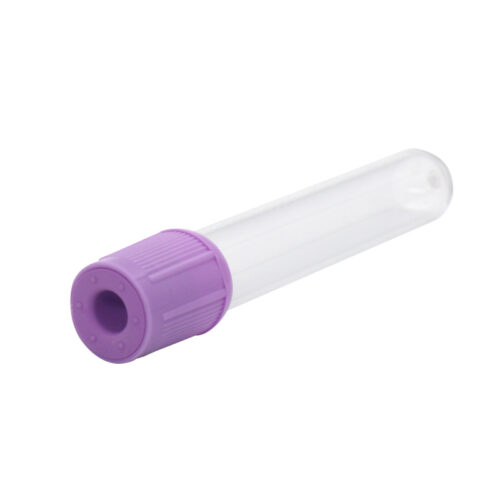The process of drawing blood from a patient is a common procedure in health facilities for a variety of diagnostic tests. A key device used in this process is the vacuum blood collection tube. This article aims to shed light on how this essential medical tool works.

A vacuum blood collection tube is a sterile glass or plastic tube with a closure that is evacuated to create a vacuum inside the tube facilitating the draw of a predetermined volume of liquid. The most common use of these tubes is for venipuncture or the drawing of blood from a patient’s vein.
The vacuum blood collection tube system is a closed system, meaning it is designed to prevent any potential contamination. It consists of a double-pointed needle, a plastic holder or adapter, and a series of vacuum tubes with rubber stoppers of various colors.
The process begins with the healthcare provider inserting one end of the needle into a patient’s vein. The other end of the needle, which is inside the plastic holder or adapter, then pierces the top of the vacuum tube. The vacuum in the tube pulls blood through the needle and directly into the tube.
The amount of blood drawn is controlled by the vacuum in the tube. Each tube is designed to draw a specific amount of blood, after which the vacuum is exhausted, and no more blood will be drawn. Once the required amount of blood has been collected, the tube is removed from the holder, and the needle is withdrawn from the patient’s vein.
The vacuum blood collection tubes are not all the same; they come with different additives which are used for different types of tests. The color of the tube’s rubber stopper is usually coordinated with the additive type. For example, a red stopper typically indicates a tube with no additives, while a lavender stopper indicates a tube with an anticoagulant additive.
After collection, the tubes are often gently inverted to mix the blood with the additive. The blood samples are then transported to a laboratory for analysis. The use of vacuum blood collection tubes has significantly improved the efficiency and safety of blood collection by reducing the risk of needlestick injuries and preventing potential contamination.
In conclusion, the vacuum blood collection tube is a fundamental tool in modern healthcare. It simplifies the process of blood collection, enhances safety, and ensures the accuracy of various diagnostic tests. Understanding how it works not only demystifies the process of blood collection but also underscores the importance of this device in medical diagnostics.

















